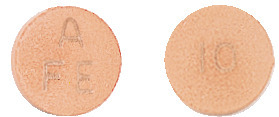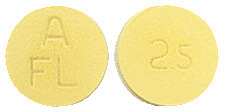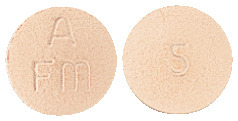What is in this leaflet
This leaflet answers some of the common questions people ask about FELODUR ER. It does not contain all the information that is known about FELODUR ER.
It does not take the place of talking to your doctor or pharmacist.
All medicines have risks and benefits. Your doctor will have weighed the risks of you taking FELODUR ER against the benefits they expect it will have for you.
If you have any concerns about taking this medicine, ask your doctor or pharmacist.
Keep this leaflet with the medicine. You may need to read it again.
What FELODUR ER is for
FELODUR ER is used to treat high blood pressure, also called hypertension. FELODUR ER lowers blood pressure by dilating (expanding) small blood vessels, letting the blood be pumped around the body more easily.
Your doctor will have explained why you are being treated with FELODUR ER and told you what dose to take.
The ER in FELODUR ER stands for Extended Release. This means that the tablets are designed to work over a 24 hour period.
FELODUR ER contains felodipine, which belongs to the family of medicines known as calcium channel blockers. These medicines do not change the way the body takes in calcium from food.
Follow all directions given to you by your doctor carefully. They may differ from the information contained in this leaflet.
Ask your doctor if you have any questions about why this medicine has been prescribed for you. Your doctor may have prescribed this medicine for another reason.
FELODUR ER is only available with a doctor's prescription.
FELODUR ER is not addictive
Before you use FELODUR ER
When you must not use it
Do not take FELODUR ER if you have an allergy to any medicine containing felodipine or any of the ingredients listed at the end of the leaflet.
Some of the symptoms of an allergic reaction may include, tightness of the chest, wheezing, coughing or difficulty breathing; swelling of the face, lips, tongue or other parts of the body; rash, itching or hives.
Do not take FELODUR ER if you have any of the following conditions:
- uncompensated heart failure
- acute myocardial infarction
- cardiac valvular obstruction
- dynamic cardiac outflow obstruction
- unstable angina pectoris
If you are not sure whether you have any of these conditions, ask your doctor.
Do not use FELODUR ER if you are pregnant or likely to become pregnant. Ask your doctor about the risks and benefits involved. FELODUR ER should not be used during pregnancy. It may affect your baby if you take it during pregnancy.
Tell your doctor as soon as possible if you become pregnant while using FELODUR ER.
Tell your doctor if you are breastfeeding or intend to breastfeed before you take FELODUR ER. Your baby can take in FELODUR ER from breast milk if you are breastfeeding, but it is unlikely to affect the infant when the mother is taking doses within the normal range for her treatment. Your doctor can discuss the risks and benefits involved.
Do not give FELODUR ER to children. There is no information on its use in children.
Do not use after the use by (expiry) date printed on the pack.
Do not use FELODUR ER if the packaging is torn or shows signs of tampering. If it has expired or is damaged, return it to your pharmacist for disposal.
Do not use it to treat any other complaint unless your doctor tells you to.
Do not give this medicine to anyone else.
Before you start to use it
You must tell your doctor if:
- you have any allergies to
- any ingredients listed at the end of this leaflet
- any other medicine used to treat high blood pressure
- any other medicines, foods, preservatives or dyes
If you have an allergic reaction, you may get a skin rash, hayfever, have difficulty breathing or feel faint.
- you have any medical conditions such as
- any heart problem, including angina
- liver problems
It may not be safe for you to take FELODUR ER if you have any of these conditions.
Tell your doctor if you are lactose intolerant. FELODUR ER tablets contain lactose
Taking other medicines
Tell your doctor if you are taking any other medicines, including any that you get without a prescription from your pharmacy, supermarket or health food shop.
Some medicines and FELODUR ER may interfere with each other. These include:
- cimetidine - a medicine used to treat stomach ulcers or heartburn
- medicines used to treat infections such as erythromycin and rifampicin
- treatment with FELODUR ER may affect the level of tacrolimus (a medicine given to prevent the body from rejecting a transplanted organ, e.g. kidney or liver) in your blood.
- medicines used to treat fungal infections such as itraconazole and ketoconazole
- medicines used to treat epilepsy such as phenytoin and carbamazepine
- medicines used to help you sleep such as barbiturates
- St John's Wort - a herbal remedy used to treat mood disorders
These medicines may be affected by FELODUR ER or may affect the way FELODUR ER works. You may need different amounts of your medicines, or may need to take different medicines.
Your doctor can tell you what to do if you are taking any of these medicines.
If you are taking other drugs which lower blood pressure, your doctor may need to change the dose of them to obtain the best results for you.
Your doctor and pharmacist have more information on medicines to be careful with or avoid while taking this medicine. If you are unsure about any medicine you are taking you should check with your doctor or pharmacist.
If you have not told your doctor, dentist or pharmacist about any of these things, tell them before you take any FELODUR ER.
Taking FELODUR ER
How much to take
The usual starting dose of FELODUR ER is one 2.5 mg or 5mg tablet taken once daily.
Your doctor will check your progress and if needed, increase your dose of FELODUR ER. Sometimes the dose will be as high as 20mg once a day.
If you have to take more than one tablet, you must take them together.
Swallow FELODUR ER tablets whole and wash them down with a glass of water. They must not be divided, crushed or chewed. If they are broken or crushed they will not work over 24 hours as they are supposed to.
It does not matter if you take FELODUR ER with food or not, but you must not take it with grapefruit juice. Grapefruit juice may increase the effect of FELODUR ER.
If you forget to take it
If you forget a dose, take it as soon as you remember, as long as it is more than 12 hours before the next dose is due.
If it is less than 12 hours until your next dose, skip the dose you missed and take your next dose when you are meant to.
Do not take a double dose to make up for the dose that you missed. If you have trouble remembering when to take your medicine, ask your pharmacist for some hints.
How long to take it
Take FELODUR ER for as long as your doctor tells you to.
FELODUR ER must be taken every day.
FELODUR ER helps control your high blood pressure, but does not cure it.
Treatment of high blood pressure is necessary in most people for the rest of their lives. Ask your doctor to explain the reasons for this.
Overdose
Telephone your doctor, the Poisons Information Centre (13 11 26) or go to Accident and Emergency at your nearest hospital immediately if you think that you or anyone else may have taken too much FELODUR ER even if there are no signs of discomfort or poisoning.
If you take too much FELODUR ER you may experience a headache, a slow heartbeat, very low blood pressure, dizziness, tiredness or feel sick (nausea).
While you are using it
Things you must do
If you are about to be started on any new medicine, remind your doctor and pharmacist that you are taking FELODUR ER.
Tell any other doctors, dentists, and pharmacists who treat you that you are taking this medicine.
If you become pregnant while taking this medicine, tell your doctor immediately.
Keep all of your doctor's appointments so that your progress can be checked.
Things you must not do
Do not take FELODUR ER with grapefruit juice. Grapefruit juice may increase the effect of FELODUR ER.
Do not stop taking FELODUR ER unless you have discussed it with your doctor.
Do not use this medicine to treat any other complaint unless your doctor tells you to.
Do not give this medicine to anyone else, even if they have the same condition as you.
Things to be careful of
Be careful driving or operating machinery until you know how FELODUR ER affects you. When you start taking FELODUR ER, whether you are changing from another medicine for high blood pressure or not, you may feel dizzy or faint due to the drop in your blood pressure.
Be careful when drinking alcohol while you are using FELODUR ER. Please talk to your doctor or pharmacist about these possibilities.
Side effects
Tell your doctor or pharmacist as soon as possible if you do not feel well while you are taking FELODUR ER. FELODUR ER helps most people with high blood pressure, but it may have unwanted side-effects in a few people.
All medicines can have side effects. Sometimes they are serious, most of the time they are not. You may need medical treatment if you get some of the side effects.
Ask your doctor or pharmacist to answer any questions you may have.
Tell your doctor if you notice any of the following and they worry you:
- headache
- swelling of the ankles
- dizziness
- flushing
- palpitations (feeling of heart pounding)
- fatigue (tiredness)
These side effects usually go away or get less with time. If they do occur, it mostly happens at the beginning of treatment, or when the dose is increased.
Other side effects you should tell your doctor about if they worry you include:
- nausea (feeling sick)
- frequent urination
- impotence / sexual dysfunction
- stomach pain
- pain, swelling or redness in your gums
- fever
- increased sensitivity of the skin to sunlight
- sensation of burning, prickling, numbness, "pins and needles"
- pain in joints or muscular pain
These side effects are usually mild.
Tell your doctor immediately or go to Accident and Emergency at your nearest hospital if you notice any of the following:
- skin rash
- fainting
- chest pain
- rapid heart beat
These are serious side effects. You may need urgent medical attention.
If any of the following happen, stop taking FELODUR ER and tell your doctor immediately or go to Accident and Emergency at your nearest hospital.
- swelling of the face, tongue or back of the throat,
- harsh sounds or difficulty when breathing
These are very serious side effects. If you have them, you may have had a serious (allergic) reaction to FELODUR ER. You may need urgent medical attention or hospitalisation.
Tell your doctor if you notice anything else that is making you feel unwell. Some people may get other side effects while taking FELODUR ER.
After using it
Storage
Keep your tablets in the blister pack until it is time to take them. If you take FELODUR ER out of the blister pack it will not keep well.
Keep it in a cool dry place where the temperature stays below 25°C.
Do not store FELODUR ER or any other medicine in the bathroom or near a sink.
Do not leave it in the car on hot days. Heat and dampness can destroy some medicines.
Keep it where young children cannot reach it. A locked cupboard at least one-and-a-half metres above the ground is a good place to store medicines.
Disposal
Ask your pharmacist what to do with any tablets you have left over if your doctor tells you to stop taking them, or you find that the expiry date has passed.
Product description
What FELODUR ER looks like
FELODUR ER tablets are available in 3 strengths:
- FELODUR ER 2.5 mg tablet - round, yellow, marked "A" over "FL" on one side and "2.5" on the other.
- FELODUR ER 5 mg tablet - round, pink, marked "A" over "Fm" on one side and "5" on the other.
- FELODUR ER 10 mg tablet - round, reddish-brown, marked "A" over "FE" on one side and "10" on the other.
All strengths are available in blister packs of 30 tablets.
Ingredients
FELODUR ER tablets contain felodipine 2.5 mg, 5 mg or 10 mg as the active ingredient,
plus
- Hydrogenated castor oil
- Propyl gallate (E 310)
- Hypromellose
- Sodium aluminium silicate
- Microcrystalline cellulose (E 460)
- Lactose
- Sodium stearyl fumarate
- Hyprolose
The coating on each tablet contains:
- Macrogol 6000
- Titanium dioxide (E 171)
- Iron oxide yellow (E 172)
- Iron oxide red (E 172) (not in 2.5 mg tablet)
- Carnauba wax (E 903).
Sponsor
AstraZeneca Pty Ltd
ABN 54 009 682 311
66 Talavera Road
MACQUARIE PARK NSW 2113
Telephone: 1800 805 342
Australian Registration Number:
FELODUR ER
2.5 mg - AUST R 60980
5 mg - AUST R 60981
10 mg - AUST R 60982
This leaflet was prepared in May 2017.
FELODUR ER is a trade mark of the AstraZeneca group of companies.
Doc ID-001688487 v4.0
Published by MIMS September 2017




 MW 384.26.
MW 384.26.